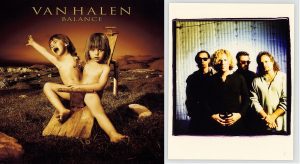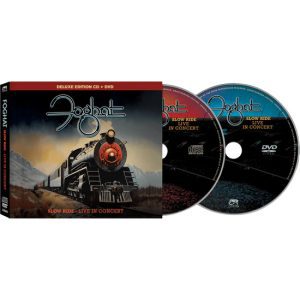Steve Ramone’s ‘Chasing Daylight’: Rock-Soul and Believing in Hooks

Chasing Daylight has the Crackle of Cellophane and the Spark of a Song
In an era dominated by digital streams and algorithmic playlists, Steve Ramone continues to champion the physical and emotional connection to music.
His recent album, Chasing Daylight, released via Pavement Entertainment a few years back, has enduring songwriting, sharp production, and heartfelt performance.
Highlighted in a feature interview on Bod’s Mayhem Hour podcast, the project emerges not only as a showcase for Ramone’s signature pop-rock aesthetic but also as a effort grounded in passion, precision, and performance.
Buy ‘Chasing Daylight’ on Amazon*
The Right Label at the Right Time
Chasing Daylight marks Ramone’s first release on Pavement Entertainment, a label traditionally associated with heavier artists.
Despite this stylistic contrast, Pavement embraced the project, backing Ramone for the quality of the music rather than adhering strictly to genre norms.
The label’s leadership, including Mark Nawara and Tim King, supported the release from a place of mutual respect and musical belief—qualities increasingly rare in a business driven by metrics and trends.
Ramone has described the experience of working with Pavement as professionally rewarding, especially in a climate where pop-rock artists often struggle to find space within established label rosters.
The Creative Triad: Song, Studio, and Stage
According to Ramone’s interview on Bod’s Mayhem Hour, his approach to music is grounded in a three-part foundation: strong songwriting, intricate studio craftsmanship, and high-energy live performance.
Each element plays a critical role in maintaining his enthusiasm and commitment to the craft.
He emphasized that writing infectious, emotionally resonant songs remains his central artistic driver.
Studio work allows him to build sonic worlds around those songs, and live performance serves as the ultimate test—where melody, arrangement, and energy come together to connect with an audience.
This philosophy is evident across the tracklist of Chasing Daylight, where classic pop-rock formulas are elevated through dynamic arrangements and modern production sensibilities.
The Making of Chasing Daylight
Produced by Chip Z’Nuff of Enuff Z’Nuff, Chasing Daylight was crafted with an eye toward longevity.
Ramone has referred to the album as a “labor of love,” developed over time and shaped by both personal vision and professional rigor.
The intent behind the record was clear: deliver a powerful, accessible rock album that would resonate with both longtime fans and new listeners alike.
The sound of Chasing Daylight is frequently compared to a modernized blend of artists like Tom Petty and Bruce Springsteen—grounded in familiar pop-rock textures but re-imagined with a certain polish and old school session-grade musicianship.
Inside Chasing Daylight: Notable Tracks and Production Choices
“Jump On It”, the album’s lead single, had been in Ramone’s catalog for some time but was revisited for the album, ultimately becoming a standout due to its vibrant rhythm and instant replayability.
“Breakaway” is another centerpiece, co-written with Chip Z’Nuff.
Musically, the track blends layered harmonies with strong guitar work, channeling influences from Heartland rock and classic power-pop bands.
It concludes with an extended jam session—a spontaneous moment captured in-studio that was nearly split off as its own track.
“Tranquila” represents a creative departure.
Incorporating Latin-inspired percussion and unconventional piano phrasing, the track reveals a willingness to explore new stylistic territory within the album’s broader pop-rock framework.
The title track, “Chasing Daylight”, although long by radio standards, plays a central role in establishing the album’s tone and scope.
Additional material, including the unreleased track “She Can’t Let Go”, has been completed and is slated for future projects.
Co-written with Paul Guerin of The Quireboys, the track was held back due to timing and album cohesion, rather than creative issues.
Chasing Daylight Track Listing, Flow, and Format
Ramone stressed the importance of album sequencing in his Bod’s Mayhem Hour interview, especially in a music culture increasingly dominated by single-track streaming.
The final track order was finalized with input from keyboardist John Scarpelli and designed to reflect a natural arc of energy, mood, and lyrical development.
While some artists in today’s industry favor EPs for their efficiency and digital flexibility, Ramone opted for a full-length release to make a definitive artistic statement.
He framed the album as an effort to preserve and defend the soul of traditional album-based rock—a format he sees as underrepresented but still culturally essential.
Studio Philosophy and the Role of Production
Working with Chip Z’Nuff brought both familiarity and creative challenge to the recording process.
The two have known each other since childhood, and their musical rapport is evident throughout the record.
Z’Nuff’s production style leans toward warmth, layering, and feel—a match well-suited to Ramone’s songwriting sensibilities.
Ramone acknowledged the changes in recording technology since the analog era.
While embracing the benefits of digital platforms like Pro Tools, he also addressed the potential pitfalls of overproduction.
He pointed out the temptation to “polish” recordings in post with synthetic layers, which can dilute the authenticity of a live band’s sound.
His preference, clearly stated, remains rooted in raw performance, driven by melody and emotion rather than technical gimmickry.
Influences and Aspirational Legacy
Discussing his musical influences, Ramone referenced a wide array of landmark albums that shaped his taste and aspirations.
Among them: Rumours by Fleetwood Mac, Born to Run by Bruce Springsteen, The Cars’ debut, Arc of a Diver by Steve Winwood, and classic albums by Rush, Elvis Costello, and Squeeze.
These influences are not mimicked on Chasing Daylight but are woven into its DNA.
Their emphasis on hooks, production quality, and emotional truth form the blueprint for what Ramone aims to deliver.
Career highlights mentioned in the podcast include opening for major rock acts and performing for crowds upward of 30,000.
However, the ultimate goals remain aspirational—venues like Red Rocks and the Hollywood Bowl are still on the wishlist.
Artistic Integrity and Attention to Detail on Chasing Daylight
Ramone described Chasing Daylight as largely complete and satisfying, though he did mention one minor production decision he would revisit.
On the track “Time to Go,” a delay effect applied to one chorus was not replicated in a later section, a detail he categorized as minor but personally significant.
This kind of self-scrutiny illustrates his meticulous approach.
It also emphasizes the weight of responsibility he feels—not just to fans, but to collaborators, promoters, and his label.
The album is both a personal milestone and a professional statement.
Chasing Daylight: A Feel-Good Record with Staying Power
Chasing Daylight is a full-bodied attempt to restore the joy, depth, and craftsmanship of feel-good rock music in a marketplace increasingly skewed toward immediacy and disposability.
From track flow to instrumentation, from lyrical resonance to production philosophy, the album reflects a commitment to substance over spectacle.
Listeners are encouraged to purchase or download the album through SteveRamone.com or directly via Pavement Entertainment, where they can support the artist in a way that streaming royalties often fail to match.
Sources:
- Steve Ramone – Official Website
- Pavement Entertainment
- Bod’s Mayhem Hour Podcast – Interview with Steve Ramone
*Disclaimer: This blog post contains affiliate links. If you click on one of these links and make a purchase, I may earn a small commission at no additional cost to you. As an Amazon Associate, I earn from qualifying purchases. Thank you for your support.




